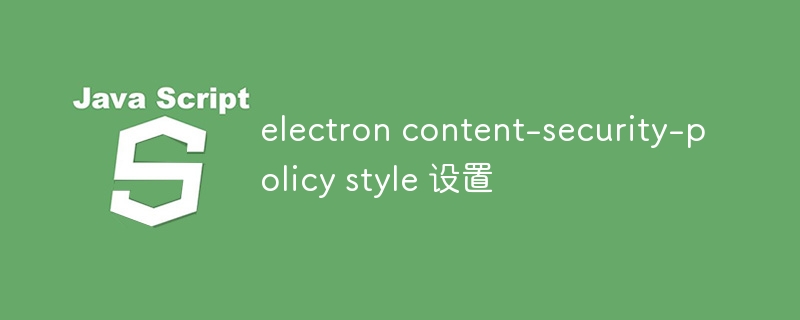
This article focuses on configuring the Content Security Policy (CSP) for styles in Electron, an application platform that allows developers to build cross-platform desktop applications using web technologies. The article discusses the use of the 'el

To configure the CSP for styles in Electron, you can use the electron.session.defaultSession.webRequest.onHeadersReceived event. This event is emitted when a request's headers are received, allowing you to modify the headers before they are sent to the server.electron.session.defaultSession.webRequest.onHeadersReceived event. This event is emitted when a request's headers are received, allowing you to modify the headers before they are sent to the server.
To add a CSP header to a request, you can use the setHeader method on the responseHeaders object. For example, the following code adds a CSP header to all requests:
electron.session.defaultSession.webRequest.onHeadersReceived((details, callback) => {
details.responseHeaders['Content-Security-Policy'] = 'default-src \'self\'; style-src \'self\' https://unpkg.com; img-src \'self\' https://unpkg.com https://example.com;'
callback({responseHeaders: details.responseHeaders});
});When setting up a CSP for styles in an Electron application, there are a few best practices to follow:
Electron's CSP for styles supports the following browser sources:
'self': This source represents the application's own origin.'unsafe-inline': This source allows inline styles to be executed.'unsafe-eval': This source allows inline scripts to be executed.'none'setHeader method on the responseHeaders object. For example, the following code adds a CSP header to all requests:'self': This source represents the application's own origin.🎜'unsafe-inline': This source allows inline styles to be executed.🎜'unsafe-eval': This source allows inline scripts to be executed.🎜'none': This source does not allow any resources to be loaded.🎜🎜The above is the detailed content of electron content-security-policy style 设置. For more information, please follow other related articles on the PHP Chinese website!




